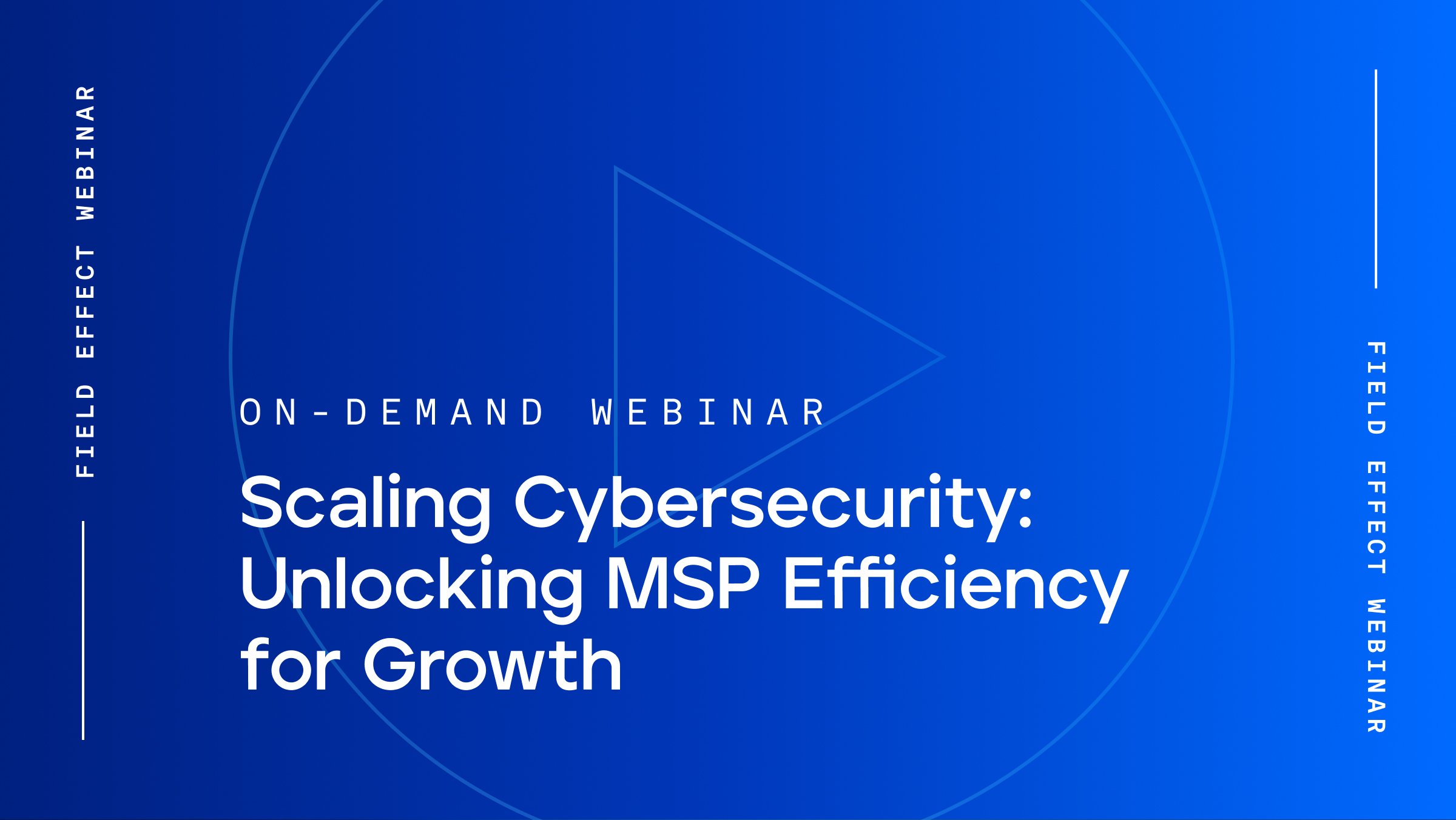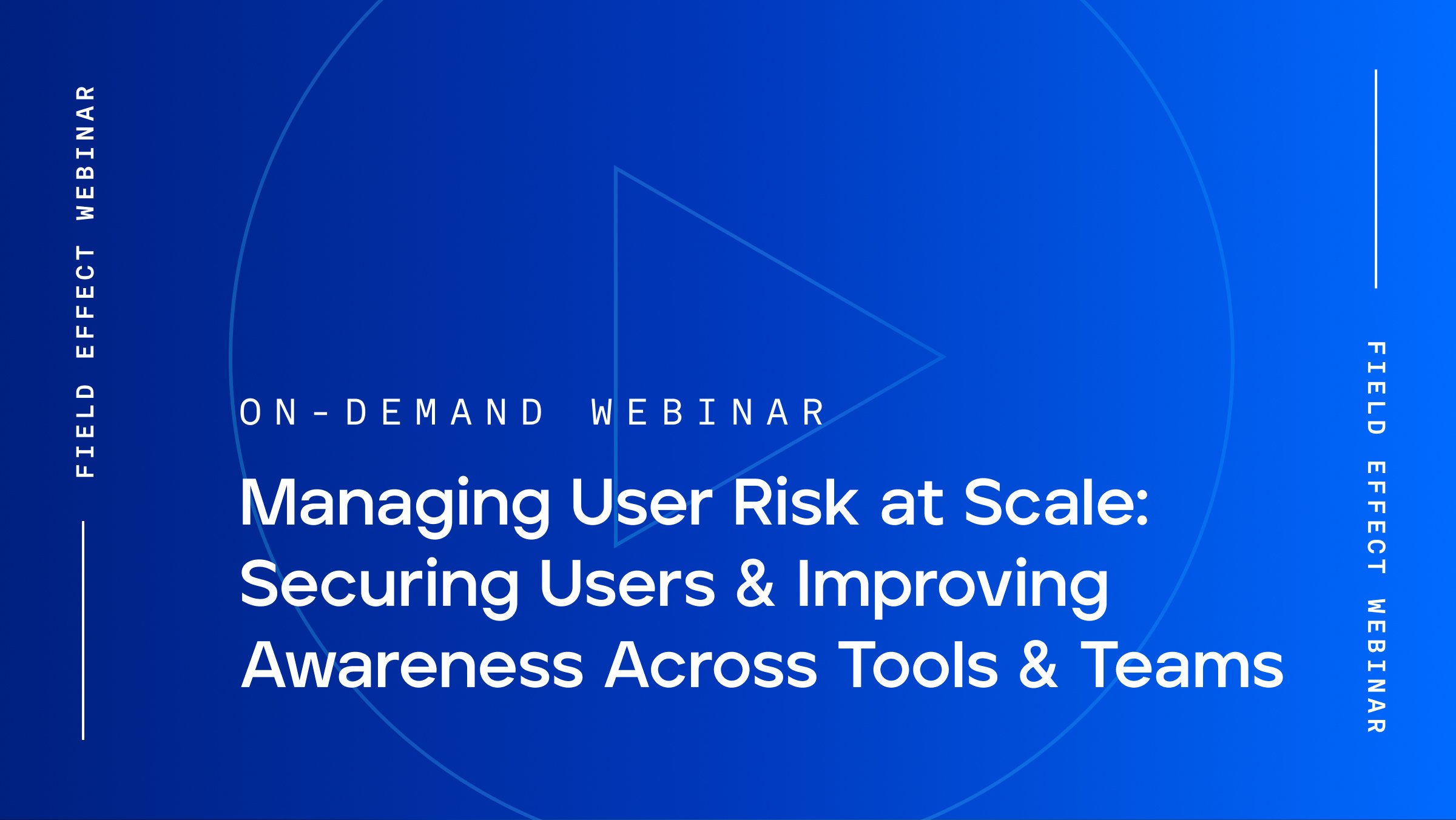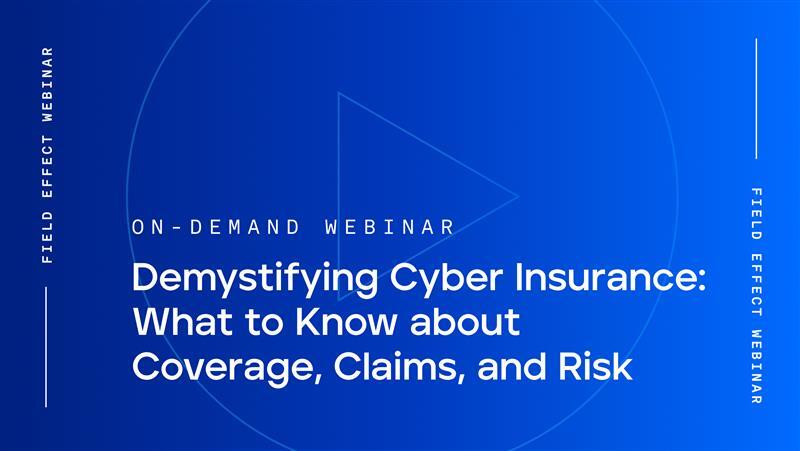
Blog Post
June 21, 2023 | Managed services Cybersecurity education
By Field Effect
Last updated: January 19, 2024
Navigating cybersecurity can be daunting. Managed service providers (MSPs) especially are using more tools to defend more of their clients' systems than ever before. More tools, however, inevitably lead to more security alerts for the MSP to confirm, investigate, and potentially respond to.
Information overload can leave teams feeling drained as they sort through mountains of data to identify potential cyber threats that could wreak havoc on their clients' systems, operations, and reputations.
Keep reading to learn what alert fatigue is, why it happens, and how to avoid it.
In cybersecurity, alert fatigue happens when IT professionals receive an overwhelming number of alerts from their security tools and systems, such as firewalls, EDRs, and more. When this happens, security teams often end up missing genuine threats while they're busy battling an endless stream of alerts.
Some common cybersecurity alerts teams frequently respond to include:
Small and medium businesses (SMBs) use the same systems and tools as large enterprises and therefore experience all the same cyber risks. When MSPs have hundreds of managed security clients (MSPs have, on average, 122 clients) this leads to an unmanageable volume of security alerts.
An MSP team's limited security resources get spread thin as they try to sort through all these alerts. Since MSPs often conduct repetitive tasks for each client, they can be even more susceptible to this kind of burnout.
Here are some main reasons any business, including MSPs, will experience alert fatigue.
A recent IBM report found that organizations' security response efforts had diminishing returns as they used more security tools. They generally felt that using more tools and dashboards gave them too many alerts, and they needed to coordinate their responses across too many tools—19, on average.
Gain practical tips for optimizing your security stack, leading to less stress for your employees and better security for your clients.
According to the same report, organizations estimated they used over 45 different security tools. Those organizations employing more than 50 security tools were 8% less able to detect and 7% less able to respond to security threats than ones with fewer tools.
Because a lot of cybersecurity software follows the motto of "better safe than sorry," these tools may be more likely to send out alerts for non-issues. As MSP security staff continue experiencing these false positives and spending time and energy responding to them, they may start doubting the legitimacy of alerts.
In fact, this led to a recent attack on VoIP vendor 3CX that compromised the company's supply chain. The vendor and users both assumed the alerts they'd received were false positives, so they were slow to respond to the attack.
In an interview afterward, a spokesperson said that the technical personnel who review alerts aren't usually able to access the context they need to quickly decide whether an alert is valid or a false positive. This may, in part, be why over one-third of IT security managers and analysts ignore threat alerts when facing a full queue.
Anomaly detection is typically used to identify network problems, meaning your cybersecurity system sets a baseline of behavior it expects. When there are deviations, it can investigate them.
But corporate network users constantly install new software products and connect different devices. Even if you completely lock devices down and strictly control the software users can download, the systems interact with constantly changing IP addresses and domain names. This makes it difficult to set a consistent, meaningful baseline.
Because of this, some cybersecurity systems detect network behavior incorrectly, so analysts have to determine whether they should open an investigation for every noisy alert or just ignore them altogether.
Exploiting a cybersecurity flaw used to take a lot of time and effort. The attacker would need to profile their target system and carefully select the appropriate tactic. Then, they had to identify numerous details about the system to evade host- and system-based security products, such as:
However, many open-source and commercial frameworks are now available for exploitation and phishing. The result? Bad actors need less skill to exploit vulnerable systems easily and cheaply, leading to a general increase in the number of cyberattacks.
Many companies' security systems still require manual investigation for all alerts, as automation can sometimes come with a hefty price tag.
However, a recent report found that breaches in companies with fully-developed security using artificial intelligence (AI) and automation cost those companies 65% less than companies without similar security measures.
IBM reported that the average cost of a data breach in America reached $9.44 million in 2022. Moreover, 83% of organizations had more than one data breach. These are daunting statistics for MSPs trying to ensure their clients' IT environments are protected.
Here are some ways to combat alert fatigue and give your clients the best chance of avoiding a breach.
Keeping up to date with the latest software vulnerabilities, phishing scams, and attack techniques is challenging. Not to mention the major cybersecurity skills shortage that affects every business, regardless of size or industry, which makes it difficult to hire dedicated analysts.
Partnering with cybersecurity experts gives you access to a team whose responsibility is to stay on top of these changes. Having access to cybersecurity professionals who are experienced, stay in the know, and consistently undergo training will help you deliver a superior managed security service to your customers.
If you piece together multiple tools in an attempt to offer complete protection, you may end up with overlapping features that ultimately result in duplicate alerts. This adds to the alert noise that your cybersecurity team has to sift through.
Instead, find comprehensive tools that offer gap-free coverage. This way, you can reduce the number of tools you use and significantly reduce the volume of alerts you’ll receive.
Using security tools that integrate with your other platforms is vital. If your tools provide data on different facets of your business, interpreting an alert could require heavy cross-referencing that quickly becomes time-consuming and tiresome. In many cases, this even means investigating duplicate alerts.
By keeping all cybersecurity information in one convenient location, it's much easier to spot problems and cut through the noise. When all the relevant information on your key platforms is accessible, you minimize the time spent swapping between the dashboards of your different tools.
Team members must not only decide whether each alert is worth further investigating, but they also often spend a lot of time trying to simply figure out what actions they need to carry out to resolve the alert.
Intelligent solutions that only send out high-fidelity alerts—with the context or steps needed to resolve them—drastically simplify the investigation and resolution process. In fact, some solutions even automate the alert triaging process to identify the most vital risks, making it easier for you to focus on your clients' more time-sensitive or pressing security issues.
By choosing a cybersecurity solution that offers active response functionality, you can take a lot of initial (and later) work off your team's plate.
For example, a tool that detects and quickly quarantines a compromised device minimizes the risk of the threat actor moving laterally within your network and potentially causing more damage. It also means teams can focus their efforts on investigating the root cause and fixing the infected system, instead of assessing all the alerts they'd receive if the threat actor gained further access.
Plus, it won't matter if the compromise happens at 2 am or 2 pm, the active response functionality will be ready to respond if something malicious happens.
Cyberattacks aren’t likely to slow down any time soon. And it's no longer enough to layer security tools one on top of the other to ensure your clients are covered.
In fact, with holistic cybersecurity solutions, you can provide more protection with fewer tools, resulting in reduced noise and less alert-induced fatigue.
Learn more about the Field Effect Partner Momentum Program and how we combine automation with human intelligence to make it easier for you to deliver managed cybersecurity.


